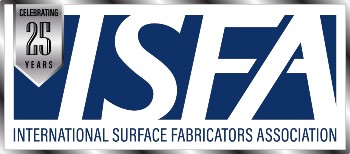Cash Flow Relief under the FFCRAA significant issue for small businesses is the impact on cash flow of the requirements under the Families First Coronavirus Response Act that was passed earlier in the week to pay sick and family leave. Tax credits to offset the cost of the required paid leave can help only if they are available without delay. Fortunately, they should be immediately available to offset these costs. On Friday evening, the Treasury Department and the Department of Labor jointly outlined guidance on the new tax credits available to small businesses to cover the costs of the paid sick and family leave requirements under the Families First Coronavirus Response Act that was passed earlier in the week. Both Departments will release the full guidelines next week. To keep members up to date on these developments, a brief summary is provided below. Sick and Family Leave Requirements As set out in our earlier update, companies can get tax credit of up to $511 per day for a total of 10 days for each employee paid sick leave because of a quarantine or isolation order, or the employees show signs of coronavirus. If the employees are paid the family and medical leave because they are providing care to children or individuals who show signs of coronavirus, then companies can get a tax credit of up to $200 per day for up to 10 days. Eligible employers can also receive a refundable childcare leave credit up to $200 per day for as long as 10 weeks. The guidance outlines issued by Treasury Department and the Department of Labor set out how these credits can be claimed without delay. The Key Takeaway Fast Funds. Reimbursement will be quick and easy to obtain. The guidelines allow an immediate dollar-for-dollar tax offset against payroll taxes for businesses that pay sick or childcare leave under the new law. As each of you know, businesses are required to withhold from their employees’ paychecks federal income taxes and the employees' share of Social Security and Medicare taxes. The employers then are required to deposit these federal taxes, along with their share of Social Security and Medicare taxes, with the IRS and file quarterly payroll tax returns with the IRS. To ensure the funds are immediately available, businesses are allowed to retain those payroll taxes rather than deposit them with the IRS. If the amount of taxes collected is not sufficient to cover the cost of paid leave, employers can seek an expedited payment from the IRS by submitting a streamlined claim form that will be released next week. Consider for example, a fabricator business that sends 10 shop employees home because the local government ordered the business shut. The fabricator has its other employees work remotely from home. The fabricator pays $8,000 in sick or family leave to its 10 shop workers. The payroll tax for both the shop employees and its remote working employees is $10,000. The fabricator can keep $8,000 of the $10,000 of taxes it was going to deposit for making qualified leave payments. The employer would only be required under the law to deposit the remaining $2,000 on its next regular deposit date. If the payroll taxes were only $6,000, then the fabricator could file a request for an accelerated credit for the remaining $2,000. Payroll Tax. Employers face no payroll tax liability, so they do not have to remit their portion of the tax. These amounts can be included in the tax credit. Healthcare Costs. The tax credit includes payment for health insurance. Self-Employed. Self-employed individuals can receive an equivalent credit for child care leave and sick leave. The credit can be can be used to reduce estimated tax payments and in year-end tax returns. Grace Period. There will be a 30-day non-enforcement period. Under this policy, Department of Labor will not bring an enforcement action against any employer for violations of the new Act so long as the employer has acted reasonably and in good faith to comply with the Act. Labor will instead focus on compliance assistance during the 30-day period. Small Business Protection. Employers with fewer than 50 employees are eligible for an exemption from the requirements to provide leave to care for a child whose school is closed or child care is unavailable in cases where the viability of the business is threatened. The combination of the grace period and the possibility of an exemption may provide time for companies to deal with the cash flow problems. The guidelines are scheduled to be release next week and ISFA will keep members informed of developments. In addition, Congress is considering additional legislation, and we will share these developments with you as well. We're on your side and committed to serving you during this Pandemic. Please don't hesitate to contact us for help. |
